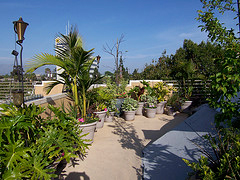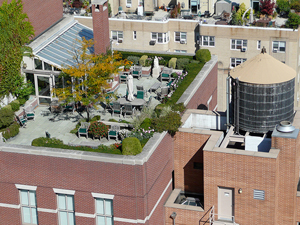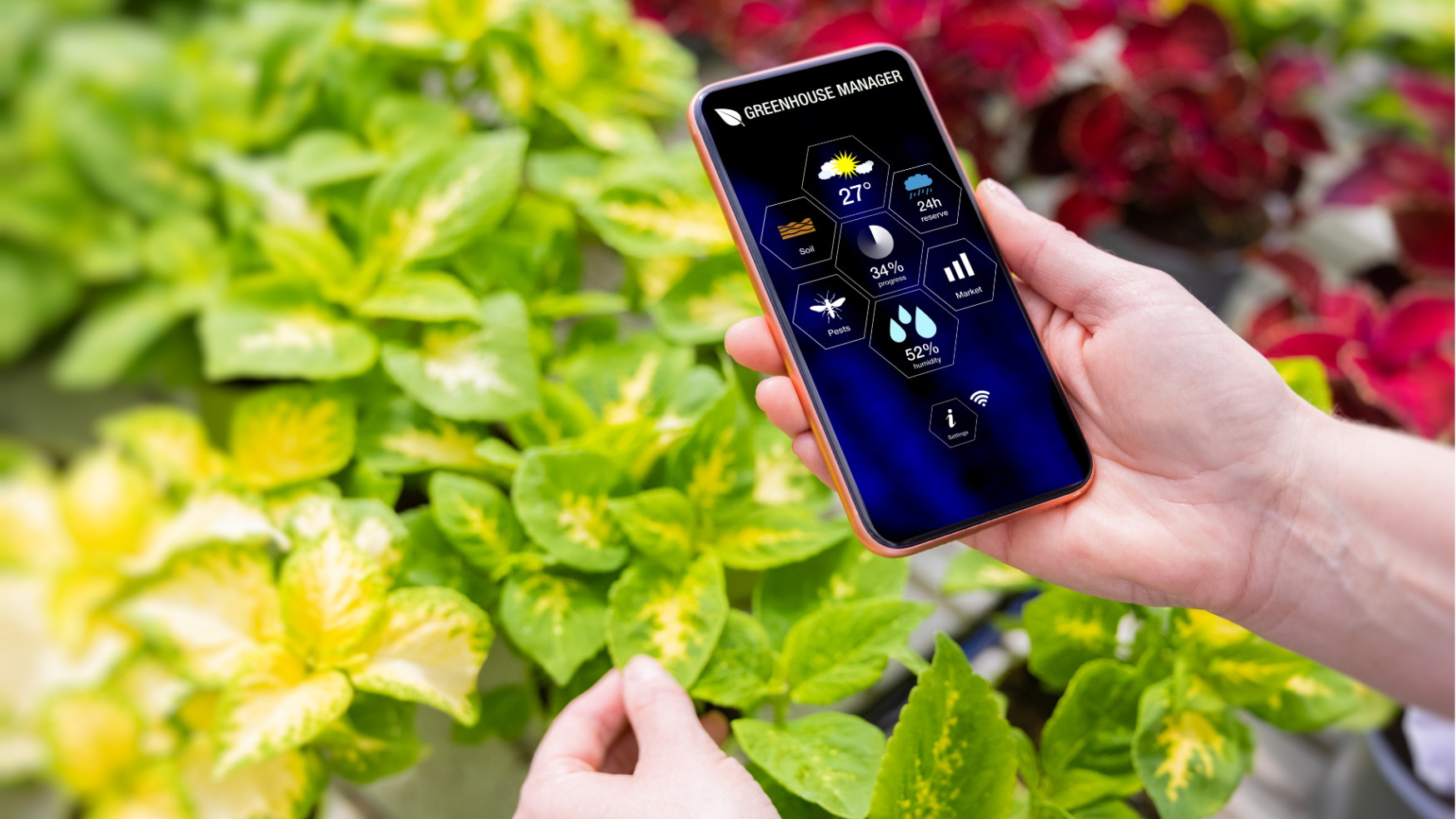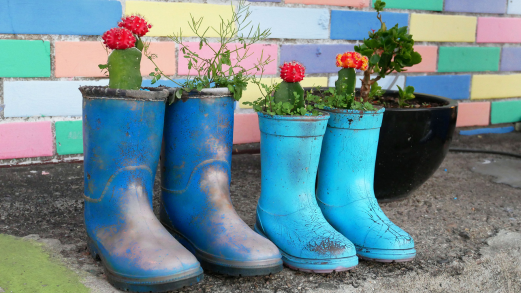Access to an inner city rooftop provides a great opportunity to establish a garden haven to relax, to entertain or to grow produce. Typically rooftop gardens are set up in containers and raised beds.
Considerations
 1. Safety: you need to know the load bearing capacity of your roof to ensure that containers filled with soil, plants, water and mulch can be supported by your rooftop.
1. Safety: you need to know the load bearing capacity of your roof to ensure that containers filled with soil, plants, water and mulch can be supported by your rooftop.
2. Sun: rooftop gardens can get very hot in the day and tend to hold onto this heat overnight. So silver-leafed, drought tolerant plants are generally recommended.
3. Shade: many rooftop gardens are heavily shaded by surrounding buildings so large-leafed, shade tolerant plants will perform best under these conditions.
4. Water access: most rooftop gardens need watering at least once a day in summer so you need to consider the practicality of hand watering or the convenience of a timed irrigation system. During periods of higher rainfall, drainage also needs to be considered
 5. Wind: your rooftop garden will probably be unsheltered and exposed to high winds. So use heavy pots otherwise your plants will topple over in every strong gust.
5. Wind: your rooftop garden will probably be unsheltered and exposed to high winds. So use heavy pots otherwise your plants will topple over in every strong gust.
6. Plants: consider plants that come from open windswept areas when looking for ideas of what will grow on your area.
7. Owners Corporation: if applicable, check in with your Owners Corporation to make sure you are within their guidelines for establishing a rooftop garden.
Photographs from Flickr
Pic 1 by Jodimarr
Pic 2 by Naypinya
Related Articles:
Citizen Science: A Pathway to Gardening Success and Biodiversity Conservation
In recent years, the realm of science has experienced a remarkable transformation, one that invites people from all walks of life to participate…
A Sustainable Gardener’s Guide to Thrifty Gardening
Creating an eco-friendly and cost-effective garden involves more than just nurturing plants; it's about adopting a sustainable approach that…



